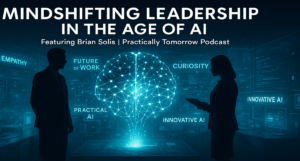
Roman Odintsov, Pexels.com
Dear managers and HR professionals, today’s global health disruption is accelerating another pandemic, a digital pandemic…
Work collaboration tools were supposed to help us reduce time spent on unnecessary emails. However, studies show that employees still spend an average of 209 minutes – three and a half hours – each day checking email. While that’s down from 256 minutes in 2016, it seems that collaborative apps aren’t replacing email, but simply adding yet another layer of distraction during our workday. These new tools might actually be additive. And, all that time and energy comes at the cost of other activity and outcomes.
Distracting by design
We live in an era of unprecedented access to information and people via technology. And that has come without life lessons, a manual, or training. As a result, it has created a free-for-all. It’s instant. It’s gratuitous. It’s validating. It’s informative. It’s also, among all of those things, if left unchecked, incredibly distracting – and it’s distracting by design.
If we look at our social networks or digital games, attention is a currency. The designers behind these apps must grab and hold as much attention as possible, while constantly finding new ways to stoke it so that the existing experiences don’t tire consumers. Everything – from the like button and notifications to how those notifications appear to introducing new types of sharing mechanisms – have all been designed to create a sense of urgency and constant feedback.
It’s called persuasive design. And much of it has been practiced without understanding its long-term intellectual, emotional, and psychological effects. This design has changed the behaviors of users, and people are literally becoming addicted to these experiences.
With the consumerization of technology, workplace apps are replicating what we use in our personal lives, causing the same distractions. One great example is Slack and similar team collaboration tools. In many company cultures, these collaboration tools are a real-time communication system, ironically used to thwart the dependency on email communication. But what we actually see is the same type of phenomenon we see with Facebook or Instagram. It’s constantly pulling you and making you feel that you need to be present in that system or you’re missing out. That pressure to be present exists at the expense of doing the other things that require a deeper form of focus or work. This can cause real anxiety, stress, and pressure that’s unaddressed and maybe even undiagnosed by the individual – and definitely undiagnosed by managers and executives within the organization.
The myth of multitasking
There are studies that show that we receive up to 200 notifications a day, and we’re programmed to look at them in real-time without considering the effects of disengaging from a concentrated task. Switching between tasks is estimated to cause loss of upwards of two hours or more per day in the workday. There are some studies that show that when working on a deep project, it might take as long as 23 minutes to get back into that focused state after engaging in a distraction.
Your brain then learns how to think and operate this way. We call it multitasking, but it’s really task-switching. It takes chemicals inside of your brain to do these tasks, and by repeatedly switching tasks – even to glance at a single email or chat message – you deplete them over time. Task-switching doesn’t allow for true depth and focus, and you find yourself working on projects and tasks far longer than you used to or completing deeper work after hours when distractions are fewer.
Business leadership needs to recognize there’s a problem
If businesses want to take the problem seriously, they need to recognize the cost to the bottom line. It’s a simple matter of math. Here are a few examples:
- McKinsey & Co. found that highly skilled workers spend 28% of their day reading and replying to email, and that doesn’t include social media distractions.
- The Economist reports that workers logging into social media costs the U.S. economy $650 billion a year, or $4,500 for each worker.
- Finally, the Information Overload Research Group reports that knowledge workers lose about 25% of their workday dealing with the constant stream of data.
When you can bring the conversation to Profit and Loss, then certainly there will be attention paid. Leadership has to start to audit analytically. It can begin by asking questions. What is the state of the organization? Is this a problem? Should we start having employee interviews to look at what their morale is like and what their employee experience is like?
It is going to require a culture change. But the problem first has to be diagnosed. Yet, this isn’t happening because these conversations aren’t happening. Many employers simply don’t want to admit that there’s a problem. One of the reasons I wrote my book Lifescale was to help bring awareness to the problem and show that it requires a significant investment of time and resources to solve.
The answer lies within us
The solution isn’t as simple as using technology less, turning off notifications, deleting apps, or conducting a digital detox. I wrote my book to demonstrate a human solution to the problem: rethinking where you are and where you want to be, and then connecting the dots of getting to your vision and your purpose. Your daily technology use should empower that move and that change. Instead of letting technology dictate how we go through the day, we dictate how we go through the day – and how technology helps us do that.
This can be done in our work lives, as well as our personal lives. If your organization’s employees aren’t focused on the meaningful work that contributes to the vision of your company, but are instead drowning in emails, meetings, and chat notifications, it may be time to address the problem of distraction in your workplace.
Technology that simplifies workplace tasks can help relieve the problem of distraction, rather than add to it.
Lifescale: How to Live a More Creative, Productive and Happy Life explores enterprise and consumer technologies to understand their impact on businesses, markets, and society. It offers insights on digital distractions and what we can do to make technology work for us rather than against us.

Brian Solis | Author, Keynote Speaker, Futurist
Brian Solis is world-renowned digital analyst, anthropologist and futurist. He is also a sought-after keynote speaker and an 8x best-selling author. In his new book, Lifescale: How to live a more creative, productive and happy life, Brian tackles the struggles of living in a world rife with constant digital distractions. His previous books, X: The Experience When Business Meets Design and What’s the Future of Business explore the future of customer and user experience design and modernizing customer engagement in the four moments of truth.
Invite him to speak at your next event or bring him in to your organization to inspire colleagues, executives and boards of directors.





Leave a Reply